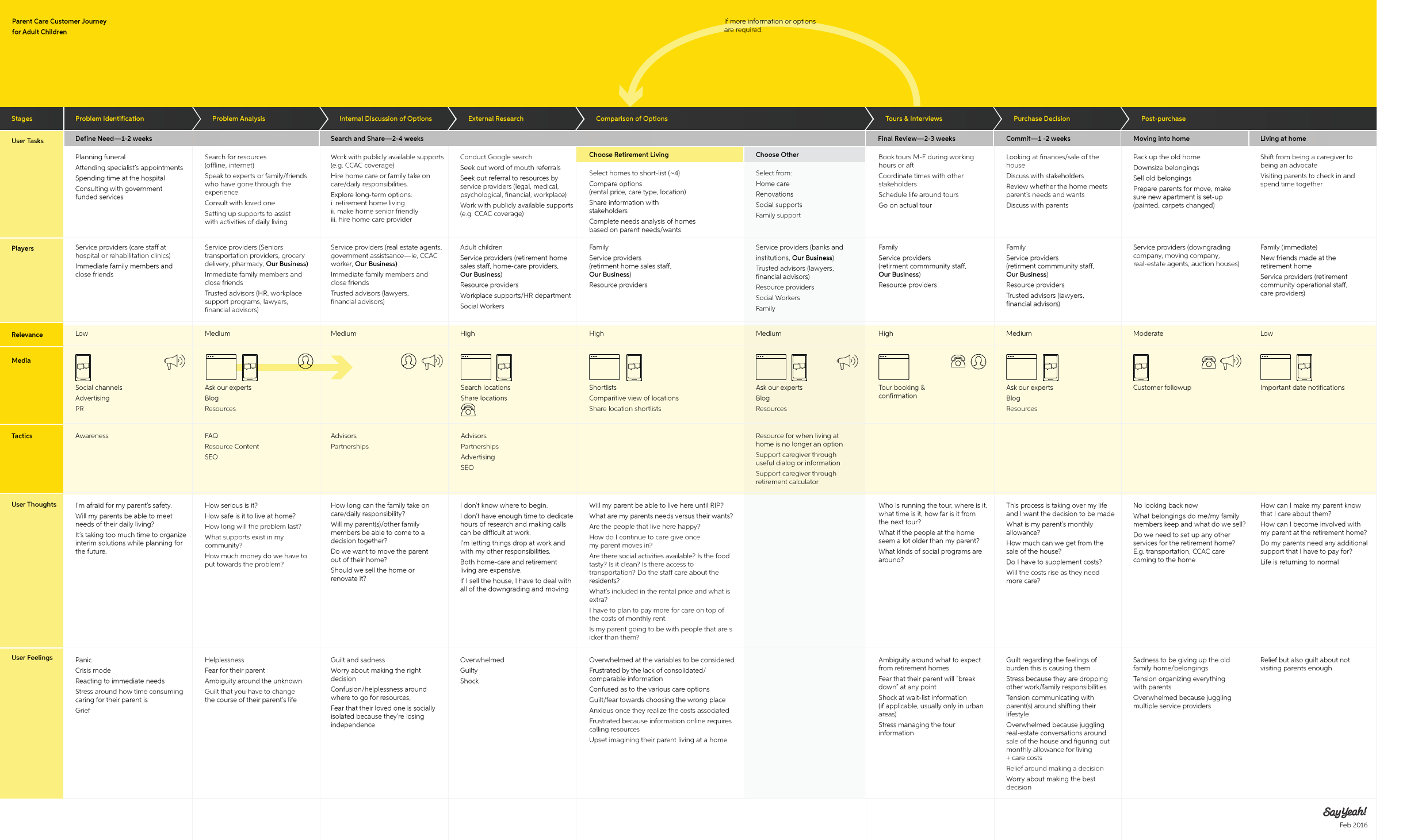A customer journey tells a complex story of the overall customer experience, from their point of view.
Each journey highlights how a customer makes decisions, what motivates them, and the stages they go through to accomplish their goals, among other key insights about your customer.
It’s vital to understand: the customer journey isn’t defined by the touchpoints between your organization and your customer.
In fact, the customer journey is all the steps a customer takes to solve their problem, with or without you.
Customer journey mapping gives you a plain view of any missing information regarding your user’s process that your company might not otherwise find. This provides you with more opportunities to connect with the consumer, deliver even more value, and reap the rewards of a more engaged consumer.
It’s to your company’s benefit to aligning business goals, service delivery, and digital initiatives to the many touchpoints of your customer’s journey. With this approach, you’ll find and leverage key opportunities to better connect with and provide value to your customer.
There are three key considerations which provide the framework for leveraging customer journeys in order to drive service delivery and digital strategy.
1. Understanding the customer journey
The research to identify the stages, customer considerations, and so on. These are identified on the journey map as Stages—which run across the top in columns—and rows for User Tasks, Players, User Thoughts, and User Feelings.
2. Customer journey mapping
Mapping these stages onto a shareable document that will be referenced by all team members.
3. Aligning service delivery and digital to the customer journey
Identifying how to leverage digital to deliver value at each stage of this journey. This is represented by the middle, darker yellow rows: Relevance, Media, and Tactics.
A sample customer journey map
This sample map—for an adult child looking for support for an ailing parent—details customer journey stages, user tasks, players, user thoughts, user feelings, and outlines how the organization can align with the customer journey to provide better, more compelling service.
 Tap to enlarge or download the map.
Tap to enlarge or download the map.Applying the customer journey: a case study
The customer journey map of an adult child looking for support for an ailing parent we highlighted was developed for an organization that was founded with one purpose: to help people find retirement homes.
The premise that informed the founding of the organization was straightforward: North America has an aging population that will require increasing levels of care, the current retirement home industry is highly competitive, and as a result there is a sales and referral model in place that is costly to retirement homes.
With 70% of this client’s engagement coming from adult children, we asked: are there stages of an adult child’s decision-making process that the client is unaware of or not supporting well under their current service model?
Leveraging the customer journey to improve customer experience and service delivery
Customer journeys play a vital role in customer experience and service delivery initiatives. Here are our related service offereings where customer research and journey mapping help improve access to market, organizational effectiveness, and the products and services you deliver to market.